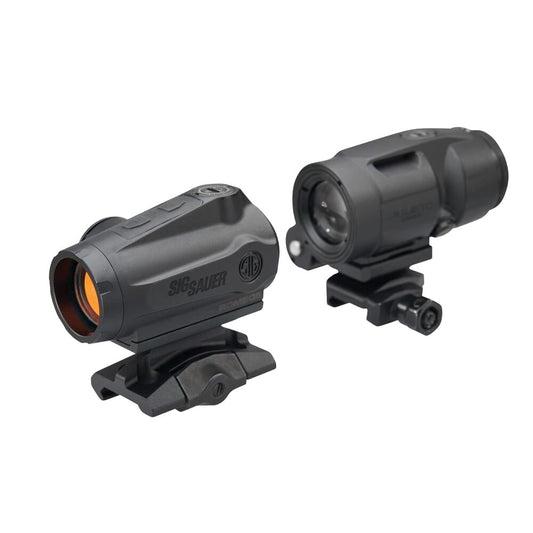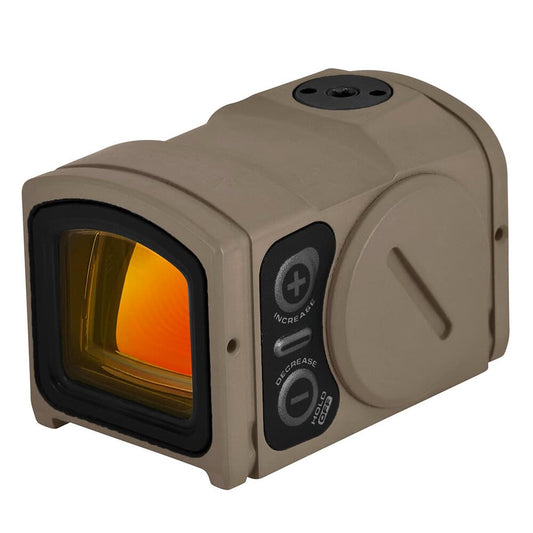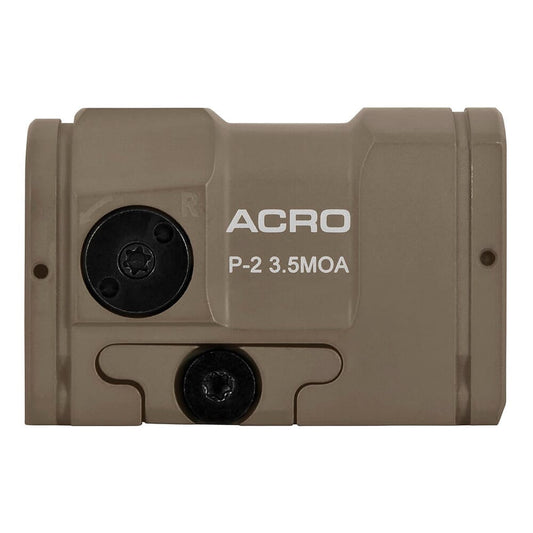

SIG SAUER Romeo5 Gen2/Juliet3 Combo SORJ5101 features a precision-engineered ROMEO5 Gen II red dot sight, providing a crisp 2 MOA dot paired with 12 brightness settings for adaptability to various lighting conditions. The JULIET3-Micro magnifier adds 3x magnification, allowing for quick transitions between close-range and mid-range targets. Designed for both range shooting and field use, this combo ensures reliable performance and versatility in various environments.
Constructed from aircraft-grade aluminum, both optics are built to endure tough conditions. An IPX7 waterproof rating and fog-proof design guarantee reliable operation in harsh weather. With a remarkable 40,000-hour battery life, the SIG SAUER Romeo5 Gen2/Juliet3 Combo is perfect for extended shooting sessions without the worry of battery failure.
Key Features:
- ROBUST DESIGN for maximum durability in demanding conditions.
- ADJUSTABLE BRIGHTNESS for perfect visibility in any lighting.
- LONG BATTERY LIFE of 40,000 hours for consistent performance.
- QUICK TRANSITIONS with the 90-degree flip-to-side mount.
- 3X MAGNIFICATION for enhanced target acquisition at mid-range.
- LIGHTWEIGHT at just a fraction of a pound for easy handling.
- WATERPROOF & FOG-PROOF for reliability in any weather.
- USER-FRIENDLY controls for quick adjustments on the fly.
Technical Specifications Table
| Specification | Details |
|---|---|
| Magnification | 1x with 3x magnifier |
| Lens Diameter | 20mm |
| Weight | 10 oz (combined) |
| Dimensions | 5.2 x 2.5 x 2.4 inches |
| Material | Aircraft-grade aluminum |
What’s in the Box?
- ROMEO5 Gen II Red Dot Sight
- JULIET3-Micro Magnifier
- Mounting hardware
- Lens covers
- User manual
Customer Reviews
"The clarity and brightness of the Romeo5 are outstanding. The Juliet3 is a game changer for mid-range targets!"
"An excellent combo. Quick to adjust, and the battery life is impressive. Highly recommend!"
FAQ
How does the SIG SAUER Romeo5 Gen2/Juliet3 Combo perform in low light?
The 12 brightness settings, including night vision options, ensure optimal visibility in low-light conditions, making it a reliable choice for dawn or dusk hunts.
Is the magnifier compatible with other red dot sights?
While the JULIET3-Micro is designed to pair seamlessly with the Romeo5, it can also be used with other compatible red dot sights, depending on mounting systems.
Similar Models
Looking for more options? Check out our range of SIG SAUER optics, including the SIG SAUER Romeo4T for tactical precision and the TANGO6 for advanced long-range capabilities. Explore our full collection for exceptional optics tailored to your shooting needs.
You May Also Like
Here’s some of our most similar products people are buying. Click to discover trending style.









